7 illustrated children's books about disability
James Catchpole, author of What Happened to You?, has joined us to share his top illustrated books for young booklovers that feature characters with disabilities or are true stories about famous disabled people.

"Disability has a chequered history in children’s books, to say the least. However fond we may be of Heidi and The Secret Garden, their take on the subject has…not aged well. More recently, there have been efforts to include incidentally disabled characters in the background and the foreground of stories – characters who just happen to be disabled – and that can be a valid route to representation, of a kind. And the rise of illustrated biographies for children has given us some excellent disabled role-models, albeit adults. But picture books that try to reflect the reality and particularity of a young disabled child's experience are still few and far between, perhaps largely because it takes a disabled author to write them (it must not be impossible for a non-disabled author to do this well…but we've read so many who've tried and…)". James Catchpole
Little People, Big Dreams: Frida Kahlo written by Isabel Sánchez Vegara and illustrated by Gee Fan Eng
The picture book biopic of Frida Kahlo in the very successful Little People, Big Dreams series is very carefully judged. It doesn’t sugarcoat Frida's injuries or her struggles with chronic pain, nor does it indulge in triumph-over-adversity clichés, but looks at her disability as part of who she is as a woman and an artist. Frida is shown with a range of mobility aids, which is a bonus.

I Am Not a Label written by Cerrie Burnell and illustrated by Lauren Baldo
Cerrie has been giving CBeebies viewers a healthy dose of good disability representation for years. Here she tells the stories of no fewer than thirty-four famous disabled people ('artists, thinkers, athletes and activists from past and present'), with a list that takes us from Beethoven to Stevie Wonder to Lady Gaga. Cerrie's text deftly sidesteps the sort of triumph-over-adversity clichés we’ve come to expect in narratives about disability, and Lauren Baldo’s artwork is uncompromisingly stylish too.
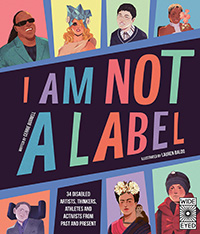
Lone Wolf by Sarah Kurpiel
Good incidental inclusion of a disabled character needs to feel natural and unforced, and Sarah Kurpiel shows how it's done in this picture book. The story here is all about the family dog having an identity crisis, and it’s very charmingly handled. That one of the children in the family uses a power wheelchair is neither here nor there in terms of the plot, and there's a lightness and sureness of touch in the way she's drawn, that’s rooted in Kurpiel's own experience of disability.

Mama Zooms by Jane Cowen-Fletcher
On the other hand, Jane Cowan-Fletcher's beautiful first picture book manages to explore disability successfully from a non-disabled perspective, which is a rare thing, especially for a debut right back in 1993. The author-illustrator tells her sister's story of being a disabled mother, and does so from the non-disabled child’s perspective. Its strength is in its utter simplicity: the hero’s mother has wheels. How cool is that?!
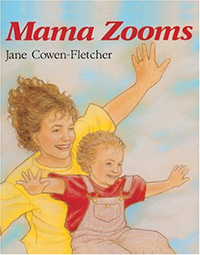
El Deafo by Cece Bell
But usually, when it comes to narratives where disability is front and centre – where the story being told is an exploration of a disabled experience – then it takes a disabled author to communicate the truth of how this feels, from the inside… In this context, it would be impossible not to flag up Cece Bell's toweringly brilliant El Deafo, a graphic novel for middle-grade and up. It's funny, real and closely autobiographical, despite being about a…rabbit. Cece puts us right behind the eyes and long, floppy ears of her heroine, as she navigates deafness, school and friendships.

This Beach is Loud! by Samantha Cotterill
This Beach is Loud! describes a daytrip to the beach from the point of view of a boy who may have autism (it's not specified) and his father. Again, Samantha Cotterill the author-illustrator knows whereof she speaks here, and her take on the particular challenges her hero faces is both insightful and very, very funny.
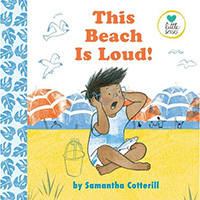
Can Bears Ski? written by Raymond Antrobus and illustrated by Polly Dunbar
Raymond Antrobus is one of the most celebrated young poets out there. His collection The Perseverance, which speaks powerfully about his deafness, won most of the big prizes going. Walker Books asked him if he'd write them a picture book about being diagnosed as deaf, as a child, and then paired his text with illustrator Polly Dunbar, who also wears hearing aids. Their first-hand knowledge of their subject matter really shows. Can Bears Ski? is a powerful and beautifully created book.
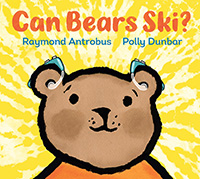
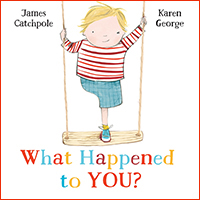
About What Happened to You? written by James Catchpole and illustrated by Karen George
The story I wanted to tell from my own childhood was about the challenges of being seen as different by the other children in the playground, and specifically about the moment another child notices your difference, stops in their tracks, and asks 'What happened to you?'
My book shows how this daily interrogation unfolds from the disabled child’s perspective. Joe just wants to play his game, but somehow he keeps being interrupted by other children asking him questions – questions he doesn’t feel like answering. The questions are pretty funny, actually (being ones that kids have asked me in real life: 'Was it a lion? Was it A THOUSAND LIONS?'), but once we stop laughing, we get to see and feel their effect on Joe, who has had enough of being singled out as different. The other children eventually see this too, and relent, and join in Joe’s game instead. And when Joe finally asks them ‘do you still need to know?', he’s delighted to hear the answer 'no.'